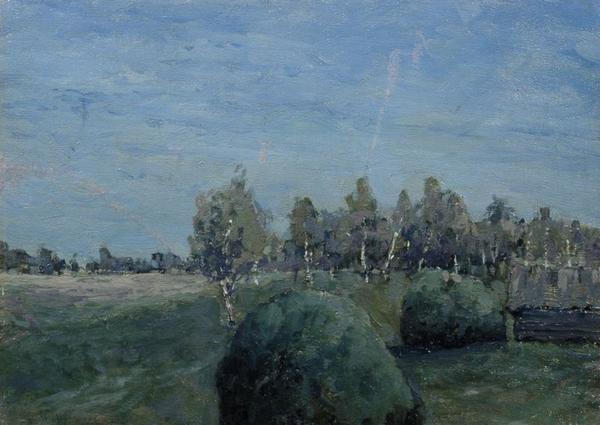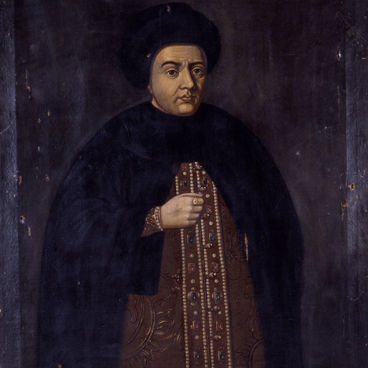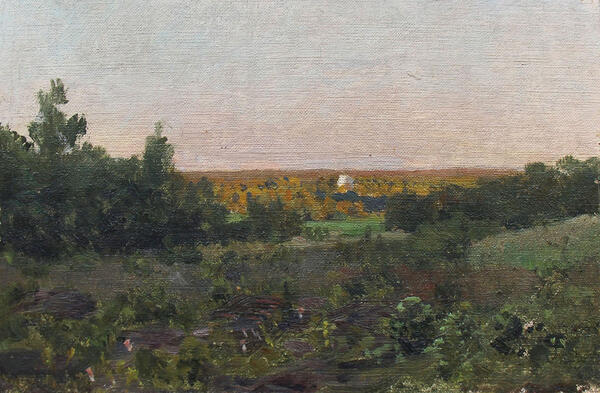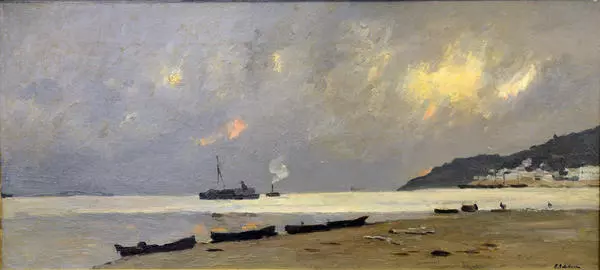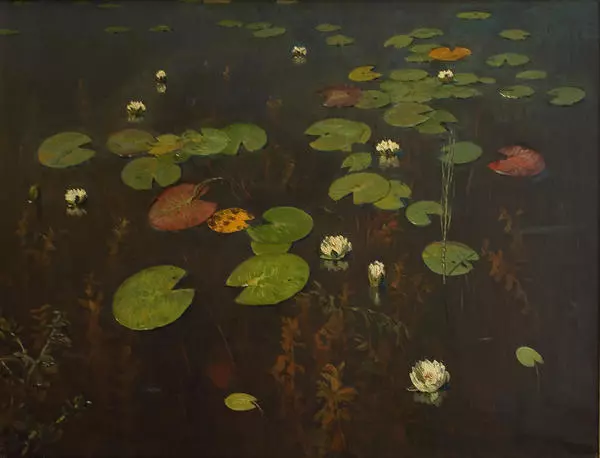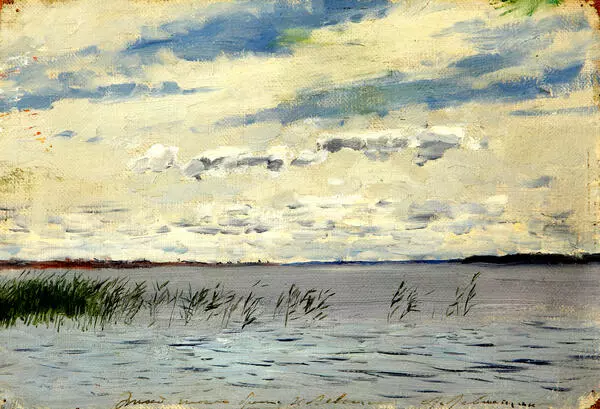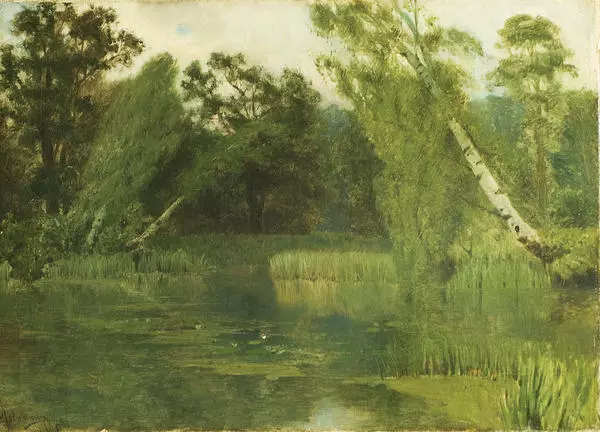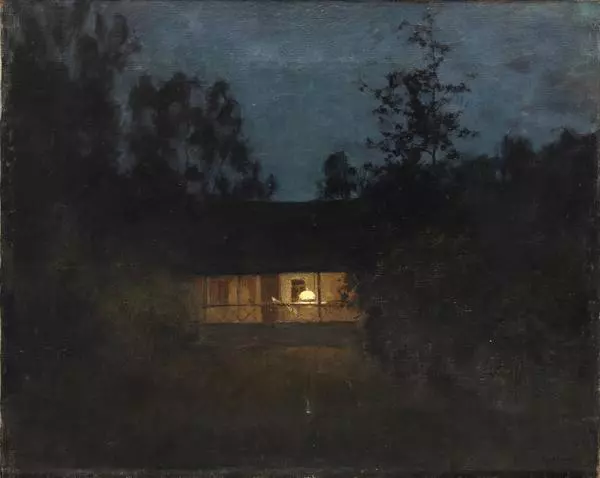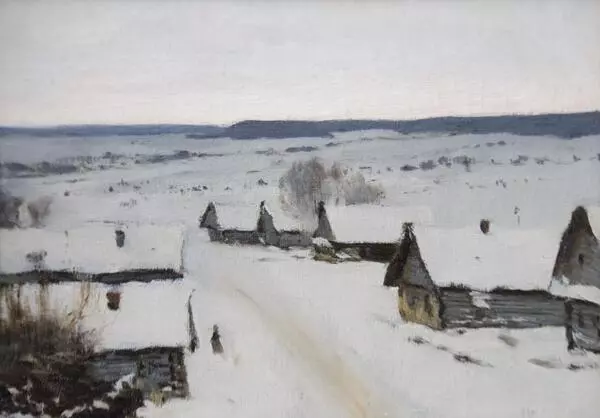The paintings by landscape artist Isaac Levitan were part of the collection owned by Pavel Tretyakov, the founder of the Tretyakov Gallery. They were exhibited in Russia and Paris. Levitan’s talent earned him the title of academician of landscape painting granting him a teaching job at the School of Painting, Sculpture and Architecture, his former alma mater.
The study A Moonlit Night presented at the exhibition dates back to the 1890s being the later period of the artist’s oeuvre. At that time, twilight and night landscapes prevailed in his work, he painted sleeping villages, quiet moonlit nights. Levitan turned to calm, peaceful scenes seeking to reveal the most essential things about nature.
The study was created during his work on the painting Twilight. Haystacks. presently exhibited at the Tretyakov Gallery. The artist was searching for a way to convey the quiet of a moonlit night on canvas using paints. The exhibition presents one of the version of that search that lasted for six years. The artist depicted the rounded shapes of haystacks that seem to be melting into the twilight. Illusively white in the darkness are trunks of birch trees emitting subtle light. The motif’s apparent simplicity is combined with multiple vibrating shades. The study’s soft colours domineered by shades of light-blue and green, convey moonlight, the colour palette is delicate and accurate. The static composition and generalized forms also express the peace and tranquility of the night.
Isaac Levitan often came to Yalta to visit Anton Chekhov, his long-time friend. One of the versions of the ‘haystacks in moonlight’ theme was created by him for Chekhov’s house. Levitan’s outlook as a painter was in many ways consonant with lyrical descriptions of landscapes in Chekhov’s work. The characters of his story In the Ravine believe that “no matter how great is evil, still the night is calm and beautiful, and still in God”s world there is and will be truth just as calm and beautiful, and everything on earth only awaits to be made one with truth, just as the moonlight merges with the night…”
Isaac Levitan was a master of “mood landscape”, the artist sought to express feelings and emotional experiences though images of nature. His works reflected a diverse range of emotions and philosophical thoughts.
The study A Moonlit Night presented at the exhibition dates back to the 1890s being the later period of the artist’s oeuvre. At that time, twilight and night landscapes prevailed in his work, he painted sleeping villages, quiet moonlit nights. Levitan turned to calm, peaceful scenes seeking to reveal the most essential things about nature.
The study was created during his work on the painting Twilight. Haystacks. presently exhibited at the Tretyakov Gallery. The artist was searching for a way to convey the quiet of a moonlit night on canvas using paints. The exhibition presents one of the version of that search that lasted for six years. The artist depicted the rounded shapes of haystacks that seem to be melting into the twilight. Illusively white in the darkness are trunks of birch trees emitting subtle light. The motif’s apparent simplicity is combined with multiple vibrating shades. The study’s soft colours domineered by shades of light-blue and green, convey moonlight, the colour palette is delicate and accurate. The static composition and generalized forms also express the peace and tranquility of the night.
Isaac Levitan often came to Yalta to visit Anton Chekhov, his long-time friend. One of the versions of the ‘haystacks in moonlight’ theme was created by him for Chekhov’s house. Levitan’s outlook as a painter was in many ways consonant with lyrical descriptions of landscapes in Chekhov’s work. The characters of his story In the Ravine believe that “no matter how great is evil, still the night is calm and beautiful, and still in God”s world there is and will be truth just as calm and beautiful, and everything on earth only awaits to be made one with truth, just as the moonlight merges with the night…”
Isaac Levitan was a master of “mood landscape”, the artist sought to express feelings and emotional experiences though images of nature. His works reflected a diverse range of emotions and philosophical thoughts.

